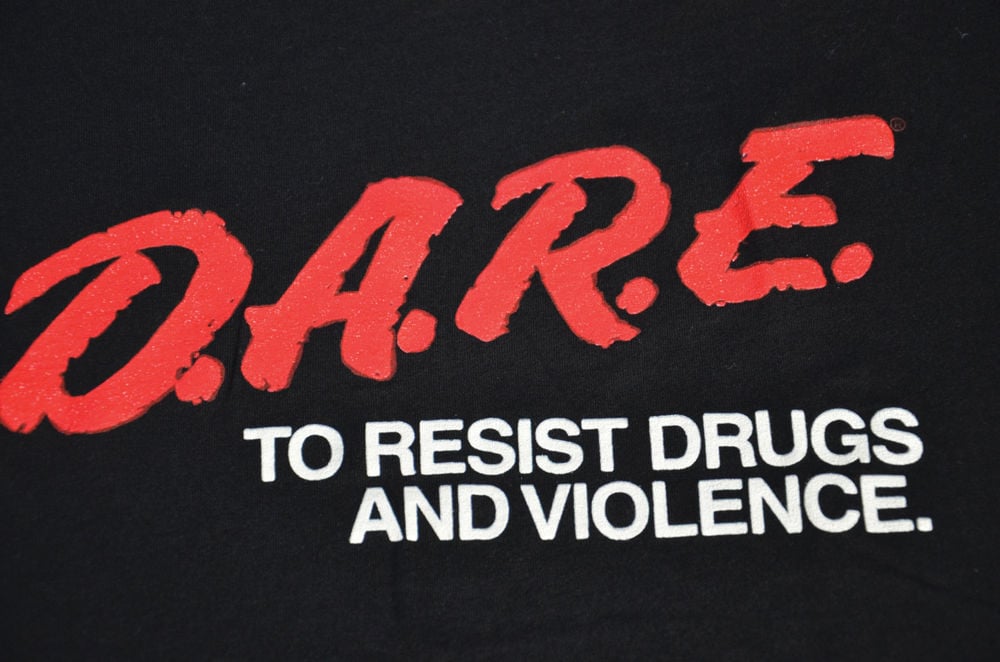

DARE Program. 240 likes 4 talking about this. D.A.R.E DRUG.ABUSE.RESISTANCE.EDUCATION. Gallery of hot Truth or Dare pics complete with a list of dares! See the dares fully illustrated in action and share your very own coolest dare pictures online!
ARCHIVED WEBSITE: D.A.R.E. (Drug Abuse Resistance Education) administers a school-based substance abuse, gang, and violence prevention program in 75% of US school districts and in 52 countries (as of 2016). Since its creation in 1983, 70,000 police officers have taught the D.A.R.E.
Program to over 200 million K-12 students worldwide – approximately 114 million in the United States alone. Galonne Pocket Serial Numbers on this page. Proponents say that D.A.R.E. Has helped prevent drug use in elementary, middle, and high school students. They contend that D.A.R.E. Improves social interaction between police officers, students, and schools, is the most prevalent substance abuse prevention program in the United States, and is popular with kids and parents. Opponents say that dozens of peer-reviewed studies conclude the D.A.R.E. Program is ineffective at preventing kids from using drugs.
They contend that D.A.R.E. Causes kids to ignore legitimate information about the relative harms of drugs, and that D.A.R.E. Is even associated with increased drug use. ARCHIVED WEBSITE: On June 22, 2017 we archived this site - meaning we will likely no longer make any updates to it. This site was archived because D.A.R.E. Replaced its controversial program from the 1980s, 1990s, and 2000s with a program developed by Pennsylvania State University called 'Keepin’ it Real” (kiR) in 2009. Codename Panzers Cold War Serial Code. We have been unable to find significant debate or controversy around the kiR program, and, thus, the need for our unique pro-con analysis appears no longer needed.
This website will remain accessible so that our readers can continue to benefit from the information it provides on the former version of the D.A.R.E. If something materially significant occurs on this subject, we may update or even unarchive the site. For a list of all of our websites, please visit. Program helps prevent drug use in elementary, middle, and high school students.
According to the US Substance Abuse and Mental Health Services Administration (SAMHSA), participants in the D.A.R.E. Program report lower alcohol, tobacco, and marijuana use than students who did not receive the program. [] 40% of participants who used alcohol at the beginning of the program reported reductions in alcohol use after receiving the curriculum, and 32% reported discontinuation of alcohol use altogether. Studies of D.A.R.E.
By the Research Triangle Institute [] and in the Journal of the National Medical Association [] found that D.A.R. Antibiotics Simplified 3rd Edition. E. Graduates are five times less likely to initiate smoking compared with non-D.A.R.E. Control groups, and report lower levels of tobacco use in 5th and 6th graders in the one to two years following program graduation. A 2010 peer-reviewed evaluation of graduates from D.A.R.E's 'Take Charge of Your Life' curriculum by the Robert Wood Johnson Foundation found that students who had used marijuana by the 7th grade were significantly less likely to use marijuana by 11th grade, compared with students in the control group.
Improves decision making and attitudes toward drug use. Peer-reviewed studies show that D.A.R.E.
Has beneficial effects on student knowledge of drugs, attitudes about drug use, social skills, decision-making skills, attitudes toward the police, and normative beliefs about the prevalence of drug use by peers. [] A 2002 study from the University of Akron concluded that overall decision-making skills for D.A.R.E. Graduates were 6% higher than for students that did not enroll or graduate, including those that received other forms of prevention education. Graduates showed a 19% reduction in perceptions that their peers were using drugs and that such drug use was acceptable. According to SAMHSA, assessments of D.A.R.E. Graduates 8 and 14 months after graduation show lower expectation of positive consequences of drug use, lower personal acceptance of drug use 2 and 8 months after graduation, and greater use of intervention strategies to turn down an offer to use drugs 2, 8, and 14 months after graduation. Improves social interaction between police officers, students, and schools.